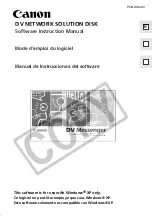
Deisotoping a Spectrum
Data Explorer
™
Software User’s Guide
3-47
3
Figure 3-17 Interpreting a Deisotoped Trace
Requirements
The Deisotope function requires a singly charged spectrum. If
the spectrum you are examining includes multiply charged
peaks, use the Single-Charge Conversion function on the
Process menu before using the Deisotope function. For
information, see Section 5.10, Converting to a Singly Charged
Spectrum (Mariner Data Only).
CAUTION
If you use the Deisotope function on multiply charged
peaks, invalid results are reported.
If first three peaks are part of
the same isotope cluster
If first three peaks are part of
the same isotope cluster, but
Contribution to expected
isotope ratio
contaminant is also present
If two isotope clusters
are present
Increased amplitude of first
peak indicates it is a
monoisotopic peak
Increased amplitude of first
peak indicates it is a
monoisotopic peak
Peak that is not
part of cluster
Contaminant
Increased amplitude of peaks
indicate they are
monoisotopic peaks
by contaminant
Peaks in original trace
Deisotoped trace
Peak that is not
part of cluster
Summary of Contents for Data Explorer 4 Series
Page 1: ...Data Explorer Software Version 4 Series Software User Guide ...
Page 10: ...Table of Contents x Applied Biosystems ...
Page 56: ...Chapter 1 Data Explorer Basics 1 42 Applied Biosystems 1 ...
Page 98: ...Chapter 2 Using Chromatogram and Spectrum Windows 2 42 Applied Biosystems 2 ...
Page 172: ...Chapter 3 Peak Detection and Labeling 3 74 Applied Biosystems 3 ...
Page 204: ...Chapter 4 Examining Chromatogram Data 4 32 Applied Biosystems 4 ...
Page 270: ...Chapter 5 Examining Spectrum Data 5 66 Applied Biosystems 5 ...
Page 316: ...Chapter 6 Using Tools and Applications 6 46 Applied Biosystems 6 ...
Page 384: ...Chapter 9 Troubleshooting 9 22 Applied Biosystems 9 ...
Page 388: ...Appendix A Warranty A 4 Applied Biosystems A ...
Page 416: ...Appendix C Data Explorer Toolbox Visual Basic Macros C 20 Applied Biosystems C ...
















































